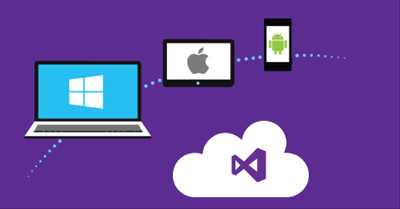| VS 2015 WPF And Forms Live Not So Sure About C++ |
| Written by Mike James |
| Thursday, 23 July 2015 |
|
Perhaps "Live!" is over the top, but hidden in the mass of updates listed as part of the Visual Studio 2015 is some news about WPF and the long abandoned, maintenance-only, Windows Forms.
You can learn a lot about what is going on internally at Microsoft by the detail. It is also true that it is a matter of opinion and you can disagree just because you can. For example, I was surprised to find that a project I was working on with a C++ component failed to compile with VS 2015. I was even more surprised to discover that the reason was that C++ was not installed by default. C# and VB .NET are and in fact you can't get rid of them. On the other hand, you have to opt for C++ as part of a custom installation. Until this version, C++ had been an integral part of all Visual Studio installs and there was no warning that this time it wasn't. While this is a small thing it speaks volumes about the recent changes. Not so long ago C++ experienced a revival at Microsoft with COM becoming the basis of WinRT, and C++ and managed C++ were looking like the languages of choice. C++ has got some nice new shiny features in Visual Studio 2015 so there is no sense in which it is on the way out, but the emphasis does seem to have changed. Of course Microsoft can justify the change as being sensible because not every VS user wants C++ and it saves disk space not to install it by default. However, not every VS user is a C# or VB programmer and you can't remove either of these! Another small detail is the way WPF has started to receive some attention. The improvements are not spectacular ,but they are evidence of movement. WPF now supports transparent child windows so that you can create non-rectangular windows. Notice that this only works in Windows 8.1 or later. In addition you can now work with high resolution - high DPI - displays. WPF now no longer clips inside controls with borders. It also now works with multiple monitors with different DPI settings, making adjustments according to which monitor something is displayed on. It also loads the correct cursor based on the DPI setting. Finally touch support has been improved by borrowing the approach used in Windows Universal apps. WPF starting to move again is great, but something ??even more amazing is the fact that Windows Forms has also been updated to support high DPI displays. This is a bit of a two-edged sword for WPF because lack of high DPI support was the most common reason for programmers having to move from Forms to WPF. Windows Forms has been in a maintenance only mode for some time, but high DPI support is a project that started with the .NET 4.5.2 Framework and is now ready to use in .NET 4.6. Other original .NET technologies that have received upgrades include WCF, which now has extended SSL support and selectable HTTP connections; Windows Workflow; ADO.NET and more. Recently Microsoft's revolving door technology policy was something that discouraged or worried programmers. It still isn't a completely solved problem, but the rise of open sourcing Microsoft technologies and the reawakening of older projects are steps in the right direction. A lot now depends on what state we find Windows 10 development in when it launches in a few days. More news then.
More InformationRelated ArticlesVisual Studio 2015 Launched - Any App Any Developer Microsoft Android Emulator Standalone For Android Studio Visual Studio 2015 To Launch Before Windows 10 Update To Windows 10 SDKs On The Way
WPF & Silverlight at risk from Microsoft's passion for HTML5
To be informed about new articles on I Programmer, install the I Programmer Toolbar, subscribe to the RSS feed, follow us on, Twitter, Facebook, Google+ or Linkedin, or sign up for our weekly newsletter.
Comments
or email your comment to: comments@i-programmer.info
|
| Last Updated ( Thursday, 23 July 2015 ) |




